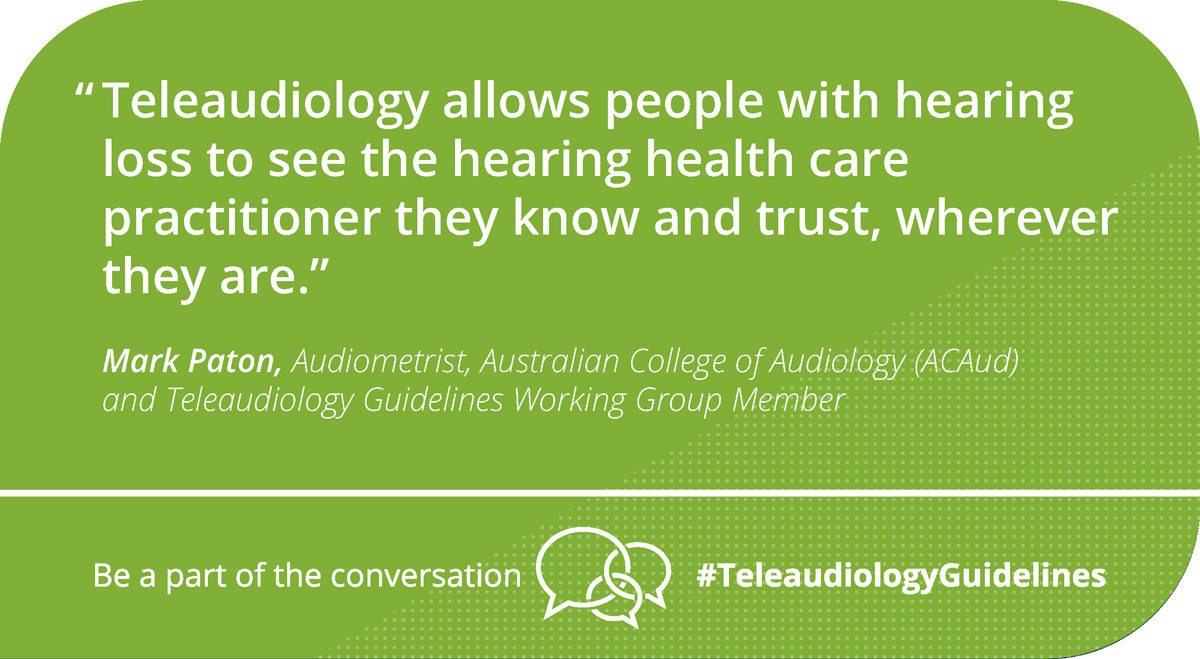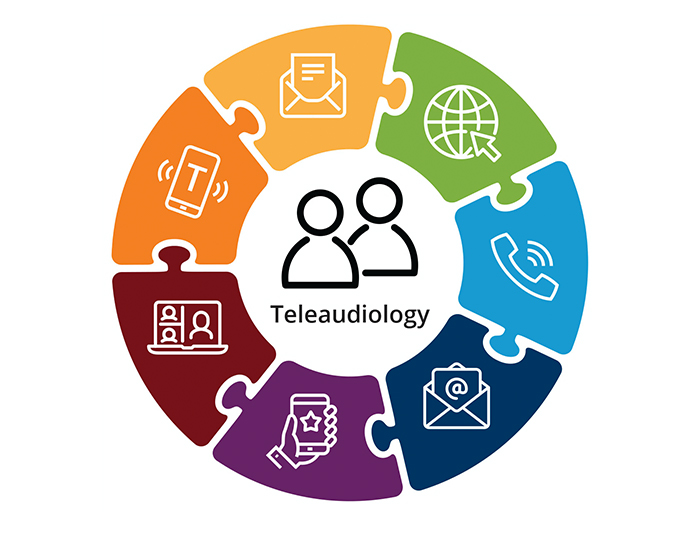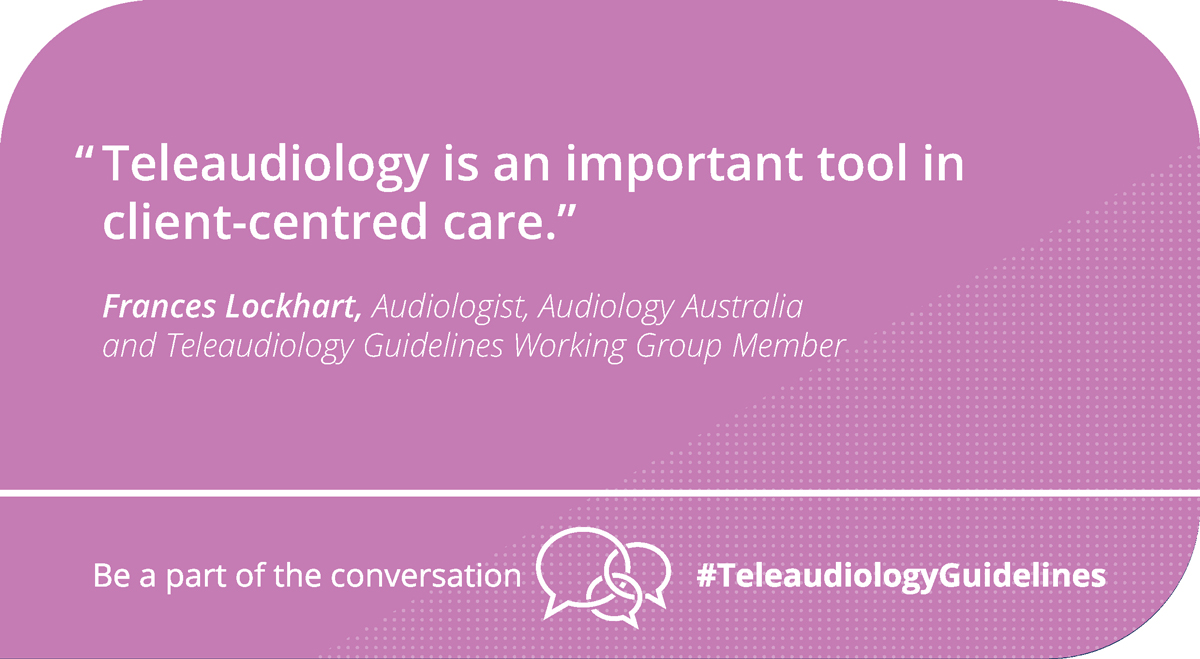Shaping the teleaudiology guidelines – what you said
Audiology Australia is developing guidelines for hearing health care practitioners…
Read More >

In 2021, the Teleaudiology Guidelines Working Group consulted the hearing health sector on draft guidelines for delivering hearing care by telehealth (otherwise known as teleaudiology). Valuable feedback was received and testing of the guidelines is now underway. The Australian College of Audiology is involved, providing input representing its membership of Audiometrists and Audiologists.
Testing the guidelines is so important. Whether you are a hearing health care practitioner, a hearing service provider or a consumer, your input is important in ensuring we deliver relevant, useable guidelines.
Looking at the testing processes in a little more detail
During testing phase, we are:
The testing phase draws on a mix of testing methods, so we understand how practitioners interpret the draft guidelines and what resources they may need to put them into practice. The results of each testing stage progressively refine the draft guidelines.
Testing involves:
1. interviewing practitioners and providers to understand how they interpret the content of the draft guidelines and obtain feedback on the relevance and useability of the guidelines
2. consulting with consumers and consumer representatives on a draft consumer resource
3. “road testing” the revised draft guidelines with practitioners and providers who have little or no experience of teleaudiology
4. surveying hearing health stakeholders about near final draft guidelines and implementation
support.
Teleaudiology can be part of the armoury for a Practitioner
Teleaudiology has a great role to play in complementing in-person services, particularly in providing rehabilitation services. I urge practitioners not to be daunted by teleaudiology and, instead, see it as an opportunity to broaden access to hearing services by customers and the community. It is part of the natural development of skills that a practitioner will need to deliver hearing care.
The teleaudiology guidelines and the supporting consumer resource aim to help practitioners to implement teleaudiology services with confidence and provide a valuable, accessible service to those receiving hearing services.
Preparing audiology for the future
I encourage all those involved in the hearing health sector, providing or receiving hearing services, to collaborate and work together during this testing phase to help prepare audiology for the future.
Read more about how we’ve developed draft guidelines and how to get involved in testing at https://teleaudiologyguidelines.org.au/about-the-guidelines-project/.
This opinion piece was first published on Audiology Australia LinkedIn page (Audiology Australia). It can also be shared direct from www.teleaudiologyguidelines.org.au via the share functions on the page.

Audiology Australia is developing guidelines for hearing health care practitioners…
Read More >
Teleaudiology complements in-person service delivery Teleaudiology has a role to…
Read More >
Teleaudiology usage over the past two years has surged as…
Read More >